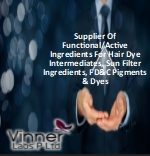
Sunblock, also known as sun cream or sunscreen, is a product designed to protect the skin from the harmful effects of the sun’s ultraviolet (UV) radiation. UV radiation from the sun can cause sunburn, premature aging of the skin, and increase the risk of skin cancer.

Sunblocks are formulated with ingredients that either physically block or chemically absorb UV radiation. Physical sunblocks contain ingredients such as titanium dioxide and zinc oxide, which reflect and scatter UV radiation away from the skin. Chemical sunblocks contain ingredients such as avobenzone, oxybenzone, and octinoxate, which absorb UV radiation before it can penetrate the skin.
What determines effectiveness of the sunblock?
The effectiveness of sunblock depends on several factors, including the type and concentration of active ingredients, the application method, and the frequency of application. It is important to use sunblock correctly and reapply it regularly to ensure adequate protection from the harmful effects of UV radiation.
Is a sun block good to use
Yes, sunblock is good to use as it can help protect your skin from the harmful effects of UV radiation from the sun. UV radiation can cause skin damage, premature aging, and increase the risk of skin cancer. Sunblocks are formulated to block or absorb UV radiation, thereby reducing its harmful effects on the skin.
Sunblock products availability by various forms
Sunblocks are available in different forms, including lotions, creams, sprays, and gels. They are typically rated according to their Sun Protection Factor (SPF), which is a measure of the product’s ability to block UVB radiation. The higher the SPF, the greater the protection against UVB radiation.
How to apply the sunblock?
Sunblocks should be applied to all exposed skin areas, including the face, neck, and arms, at least 15-30 minutes before exposure to the sun. Reapplication of sunblock is recommended every 2 hours or after swimming or sweating. It is important to use sunblocks as directed and to seek shade or wear protective clothing in addition to using sunblock to further reduce UV radiation exposure.
Is sunblock safe to use?
Sunblock is generally considered safe when used as directed. The active ingredients in sunblock have been extensively tested and are regulated by various government agencies, such as the U.S. Food and Drug Administration (FDA) and the European Union (EU) regulatory agencies.
Overall, it is important to choose sunblock products that are labeled as “broad-spectrum” (meaning they protect against both UVA and UVB radiation), have a sun protection factor (SPF) of at least 30, and are approved by regulatory agencies. It is also important to use sunblock correctly and reapply it regularly, as directed on the product label, to ensure adequate protection from the harmful effects of UV radiation.
Limitations of using sunblock
However, it is important to note that sunblock alone may not provide complete protection from UV radiation. It is recommended to seek shade during peak sun hours, wear protective clothing such as hats and long-sleeved shirts, and avoid prolonged exposure to the sun. Additionally, it is important to apply sunblock as directed, reapply as needed, and use a broad-spectrum sunblock that protects against both UVA and UVB radiation.
In summary, sunblock is a useful tool in protecting your skin from the harmful effects of UV radiation. However, it should be used in combination with other sun protection measures for optimal protection.
